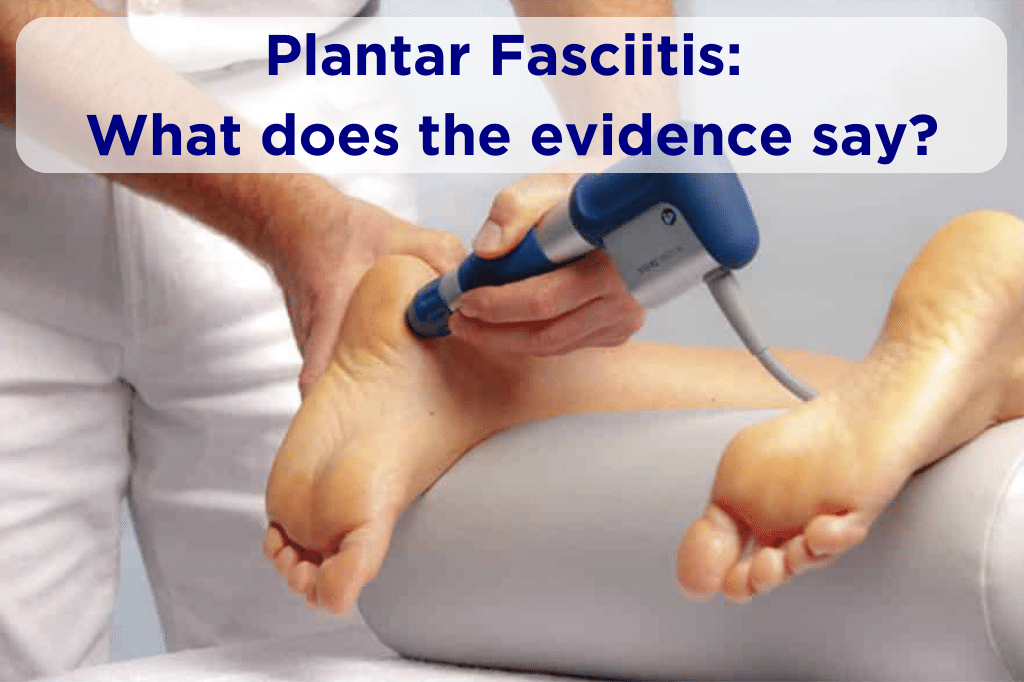Plantar Fasciitis: Symptoms, Causes, and Treatments
Plantar fasciitis is the most common condition in the foot that we see as a podiatrist. It is where a patient experiences pain and inflammation in the bottom of the foot, under the heel. It affects the plantar fascia, which is a thick band of tissue that connects the heel bone to the toes and supports the arch of the foot.
Plantar fasciitis can be caused by various factors, such as overuse, injury, obesity, age, or foot mechanics.
Some common symptoms of plantar fasciitis are:
- Heel pain that is worse in the morning or after long periods of standing or sitting
- Difficulty walking or running.
- Swelling or tenderness in the heel area
- Sharp (stabbing sensation) or bruise like aching sensation in the bottom of the heel
There are numerous treatment options for plantar fasciitis and patients often can be confused about what treatment they should have, and how likely they are to improve.
Thankfully a recent systematic review (Gold standard for research – in which 96 studies were analysed) was completed in 2021 of the current evidence on plantar fasciitis for clinicians.
Below we summarise the key findings from the systematic review, so you can have a better understanding of what treatment options are available and the evidence for them. The treatments include injection therapy, shockwave therapy, orthoses, manual therapy, acupuncture, exercise, and surgery.

The Main Findings and Treatment Options:
Injection therapy
Corticosteroid injections are more effective than placebo in reducing pain and improving function in the short term but have potential adverse effects and may not be superior to other treatments. Platelet-rich plasma (PRP) injections may be more effective than corticosteroids in the long term, but the evidence is inconsistent and of low quality. Other types of injections, such as autologous blood, prolotherapy, and botulinum toxin, have insufficient evidence to support their use.
Shockwave therapy
Extracorporeal shockwave therapy (ESWT) is more effective than a placebo in reducing pain and improving function, but the optimal dose, intensity, and frequency are unclear. ESWT may be comparable or superior to other treatments, such as corticosteroids, orthoses, or exercise, but the evidence is limited and conflicting.
Orthoses
Foot orthoses, such as insoles, night splints, or taping, are more effective than placebo in reducing pain and improving function, but may not be superior to other treatments, such as corticosteroids, ESWT, or exercise.
The type, material, and design of orthoses may influence their effectiveness.

Manual therapy
Manual therapy, such as manipulation, mobilization, massage, or stretching, is more effective than placebo in reducing pain and improving function, but may not be superior to other treatments, such as corticosteroids, ESWT, or exercise. The type, duration, and frequency of manual therapy may influence its effectiveness, but the evidence is insufficient to recommend specific manual therapy techniques for plantar fasciitis.
Dry needling/western acupuncture
Dry needling/ Western Acupuncture is more effective than placebo in reducing pain and improving function, but may not be superior to other treatments, such as corticosteroids, ESWT, or exercise. The type, location, and number of acupuncture points may influence its effectiveness, but the evidence is insufficient to recommend specific acupuncture protocols for plantar fasciitis.
Exercise

Exercise, such as strengthening, stretching, or eccentric loading, is more effective than placebo in reducing pain and improving function, but may not be superior to other treatments, such as corticosteroids, ESWT, or orthoses. The type, intensity, and duration of exercise may influence its effectiveness, but the evidence is insufficient to recommend specific exercise programs for plantar fasciitis.
Surgery
Surgery, such as plantar fascia release or endoscopic plantar fasciotomy, is more effective than a placebo in reducing pain and improving function, but has potential complications and risks, and may not be superior to conservative treatments, such as corticosteroids, ESWT, or orthoses. Surgery should be reserved for patients who fail to respond to conservative treatments for at least six months.
Conclusion
The authors conclude that there is no clear evidence to support the superiority of any single treatment for plantar fasciitis and that the choice of treatment should be based on the patient’s preference, availability, cost, and safety. They also suggest that multimodal care that combines different treatments may be more effective than single treatment and that more high-quality RCTs are needed to compare the effectiveness of different treatments for plantar fasciitis.
If you would like to have us provide a clinical assessment and treatment you can see us at Leading Edge Podiatry (Formerly Complete Podiatry Blackwood). Feel free to book online or call us on 7120 6063! We look forward to helping your feet be pain free.

